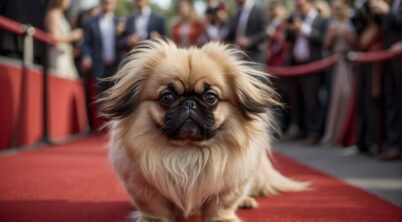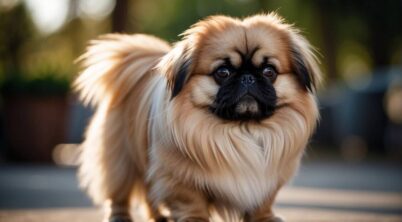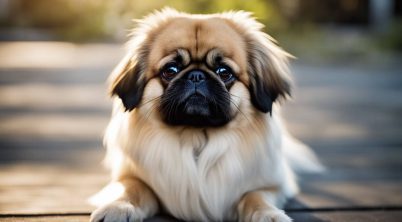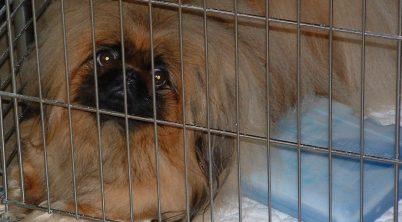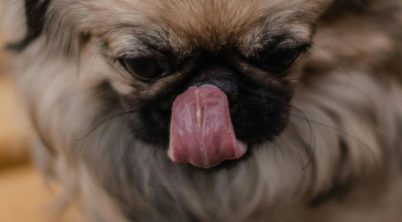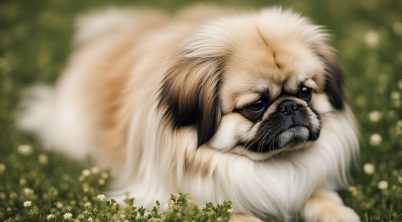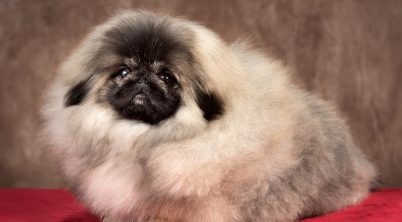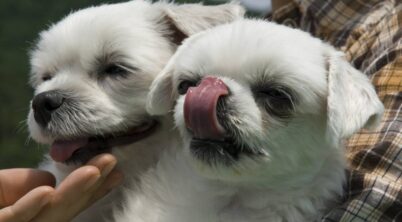The Pekingese, a toy dog breed originating from China, boasts a luxuriant coat that has charmed dog enthusiasts for centuries. Known for their regal and confident attitude, Pekingese dogs have a distinctive flat face with a broad skull. While their appearance is indeed striking, a common question among potential and current owners is how much this breed tends to drool.
Drooling is not a hallmark trait for this breed, as it is with some others known for their slobbery demeanor. In general, Pekingese dogs maintain a relatively dry demeanor, but certain conditions or scenarios might stimulate an increase in drooling. Factors such as dental issues, stress, or anticipation of food can cause a Pekingese to drool more than usual.
Being aware of the typical temperament and physical characteristics of the Pekingese can help owners gauge what is normal for their pet and what might be an indication of a health issue. While they do not typically drool a lot, it is important for owners to understand their pet’s behaviors, potentially including drooling, within the broader context of their health and well-being.
Table of Contents
Pekingese Drooling a Lot
The Pekingese breed is characterized by its distinctive, folded face and luxurious coat. When examining the breed’s behavior with regard to drooling, it is moderate compared to breeds with more pronounced jowls.
Factors Contributing to Drooling
- Dental Health: Regular dental check-ups are important to prevent excessive drooling.
- Hydration: Adequate water intake is essential, especially in warm weather, to reduce heat-induced drool.
- Health Issues: Sudden onset of drooling could indicate a health problem that requires veterinary attention.
Drooling can be a normal behavior for dogs, but with Pekingese, it is not typically a significant issue. However, it is crucial to monitor any changes in the amount of drool or drooling without an obvious trigger, such as the anticipation of food or exercise, which could signal a need for a health assessment.
| Situations When Pekingese Might Drool More |
|---|
| During Exercise |
| In Hot Weather |
| When Nervous or Anxious |
| While Experiencing Oral Discomfort |
Owners seeking to maintain a comfortable living space for both themselves and their Pekingese should practice regular oral hygiene care and ensure their pet’s environment is calming and stress-free. For excessive drooling, one must always consider the possibility of underlying medical causes and should not hesitate to consult a veterinarian.
Drooling in Pekingese
Pekingese dogs may drool occasionally, with the amount varying from one dog to another. Excessive drooling, however, could be indicative of underlying health issues.
Causes of Excessive Drooling
Excessive drooling in Pekingese can be a symptom of several conditions. Common causes include:
- Oral Health Problems: Issues like dental infections, gum disease, or tooth decay can lead to increased saliva production.
- Heat and Dehydration: Pekingese dogs may drool more in hot weather, especially if they’re dehydrated. Making sure they have access to fresh water is crucial.
- Stress or Anxiety: These emotional states can trigger excessive drooling. Identifying stressors is key to managing this response.
- Medical Conditions: Certain health problems like nausea, throat blockages, or neurologic conditions could cause a Pekingese to drool more than usual.
Managing and Reducing Drooling
To manage and reduce drooling in Pekingese, consider the following treatment options and strategies:
- Veterinary Care: If a Pekingese exhibits sudden or excessive drooling, a vet should examine them for potential health problems.
- Maintain Oral Hygiene: Regular dental cleanings and at-home teeth brushing can prevent dental issues that cause drooling.
- Proper Hydration: Ensure the dog has continuous access to water, particularly in warm climates, to prevent dehydration.
- Stress Reduction: Create a calm environment and use techniques to reduce anxiety, which could decrease drooling.
Pekingese Behavior and Training
The Pekingese is a breed characterized by a confident and independent personality, often perceived as stubborn due to its strong-willed nature. Despite its small size, the breed displays considerable courage and loyalty, traits that have endeared it to many. Due to their expressive eyes and affectionate demeanor, Pekingese can form strong bonds with their owners, which may lead to separation anxiety if not managed properly.
When it comes to training, their stubbornness can pose a challenge. Consistent, patient, and respectful training sessions are often needed to harness their capabilities. It is important for owners to establish a clear hierarchy, as the breed thrives when they know their place in the pack and what’s expected of them.
Positive reinforcement training is effective with Pekingese, rewarding good behavior with treats or praise to encourage repeat performance. Desensitizing strategies are important to prevent them from becoming overwhelmed, especially when they are young.
Effective Training Strategies
- Housebreaking: Start with a consistent schedule, using crate training as a tool to establish routine.
- Socialization: Early exposure to various environments and people can help curb their innate wariness.
- Behavioral Management: Redirect any reactive behavior on the leash with commands and rewards.
For families with children, it’s crucial that interactions are supervised to instill mutual respect. Pekingese might not tolerate rough play and can be quite sensitive to harsh treatment. While calm under the right circumstances, they can be willful, so establishing firm yet kind leadership is key to fostering good behavior.
History and Breed Information
The Pekingese, a dog breed steeped in antiquity, originates from Peking—now known as Beijing—the capital city of China. DNA evidence underpins the breed’s ancient lineage, tracing back two millennia. Traditionally referred to as “Lion Dogs” due to their resemblance to Chinese guardian lions, the Pekingese were esteemed by Chinese nobility. In ancient times, they were so revered that theft of a Pekingese was punishable by death.
The breed was not well-known in the Western world until the mid-19th century. During the Opium War, in 1860, British troops invaded the Chinese Imperial Palace. Among other treasures, they discovered the Pekingese and brought several back to England. One of these dogs was presented to Queen Victoria, marking the beginning of the breed’s Western lineage.
Later, the breeding expanded with notable figures such as the Duke and Duchess of Richmond and Gordon and the Duchess of Wellington contributing to the Pekingese’s popularity. The introduction to the West saw the Pekingese quickly become a coveted companion.
- Recognized by the American Kennel Club (AKC), Pekingese fall under the toy group.
- The term “sleeve dog” is sometimes used in reference to Pekingese; in ancient China they were carried in the large sleeves of Chinese nobility.
The Pekingese possesses a distinctive flat face and a well-rounded, sturdy body. Despite the affectionate nature of the breed, owners should be aware that certain physical attributes, like their brachycephalic (flat) face, can contribute to health issues such as difficulty in regulating body temperature and can result in symptoms like excessive panting.

